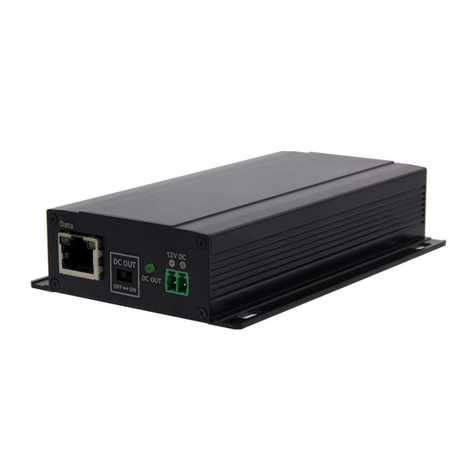
Safety instructions
•Before switching on and operating the system, first read this safety advice and the operating instructions.
•Keep the operating instructions in a safe place for later use.
•Installation, commissioning and maintenance of the system may only be carried out by authorised individuals and in
accordance with the installation instructions - ensuring that all applicable standards and guidelines are followed.
•Protect the devices from water penetration and humidity, since these can cause lasting damage.
•Should moisture nevertheless enter the system, under no circumstance switch on the devices under these conditions,
instead send them for examination to an authorised specialist workshop.
•The system must never be used outside of the technical specifications, since this can destroy it.
• The device must be protected from excesses of heat, dust, humidity and vibration.
• When separating the system from the voltage supply, only ever use the plug to pull out the cable. Never pull directly on the
cable itself.
• Lay the connecting cables carefully and check that they are not mechanically stressed, kinked or damaged and that no
humidity can penetrate into them.
• In the event of a malfunction, please inform your supplier.
• Maintenance and repairs may only be carried out by authorised specialist personnel.
• The system must be isolated from the power supply before opening the housing.
• The device may only be opened by qualified service personnel. Unauthorised access invalidates any warranty claim.
• Connection cables should always be exchanged through Videor E. Hartig GmbH.
• Use only original spare parts and accessories from Videor E. Hartig GmbH.
• The housing should only be cleaned using a mild domestic cleaning agent. Never use solvents or petrol as these can
permanently damage the surface.
• During installation, it is essential to ensure that the seals provided are correctly installed and that they are not displaced
during installation. Damaged seals must not be installed and will invalidate any warranty.
• The installer is responsible for the maintenance of the enclosure as per the technical data, e.g. by sealing the cable outlets
with silicone.
• Wire end ferrules should be used when shortening the flexible connection cables.
• The devices may only be operated in the temperature range indicated in the data sheet and within the defined air humidity
range.
WEEE (Waste Electronical & Electronic Equipment)
Correct Disposal of This Product (Applicable in the European Union and other European countries with separate collection
systems).
This marking shown on the product or its literature, indicates that it should not be disposed
with other household wastes at the end of its working life. To prevent possible harm to the
environment or human health from uncontrolled waste disposal, please separate this from
other types of wastes and recycle it responsibly to promote the sustainable reuse of
material resources. Household users should contact either the retailer where they purchased this
product, or their local government office, for details of where and how they can take this
item for environmentally safe recycling. Business users should contact their supplier
and check the terms and conditions of the purchase contract. This product should
not be mixed with other commercial wastes for disposal.




























